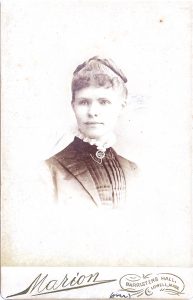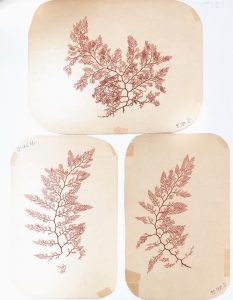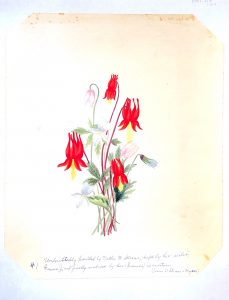Nettie Maria Stevens’ Scientific Art
The pressed ferns and watercolor flowers were made by geneticist Nettie Stevens (1861-1912) after 1872. The flowers depicted are columbine and pansies.
Nettie Stevens was one of the first female scientists to become well known in biological sciences. Born in Cavendish, Vermont, 1861, she moved to Westford’s Forge Village with her family after her father remarried in 1865. After already displaying academic prowess, she entered Westford Academy in 1872, and graduated in 1880, after completing the college prep program at the time. She then taught a variety of subjects, including zoology and physiology, at the high school in Lebanon, NH, and went on to study several science subjects at the Westfield Normal School in the early 1880s. She also taught in Westford at both Minot’s Corner School (No. 6) and later Westford Academy until 1892. In 1896, she furthered her education at Stanford University, graduating with a Biology Master’s in 1900, and subsequently went to Europe under a fellowship. In 1903, she received her PhD from Bryn Mawr College, and went on to research sex determination in insects, discovering X and Y sex chromosomes by 1905. She died in 1912 before occupying the research professorship at Bryn Mawr specifically created for her. In 1994, Nettie Stevens was inducted into the National Women’s Hall of Fame for her groundbreaking research into chromosomes.
The photograph and “plants” were donated by Westford resident June Kennedy.
Artwork
Thick card stock
Ferns, watercolor
W.2001.31f
Photo
Black and white
Paper, card
W.2001.31a





